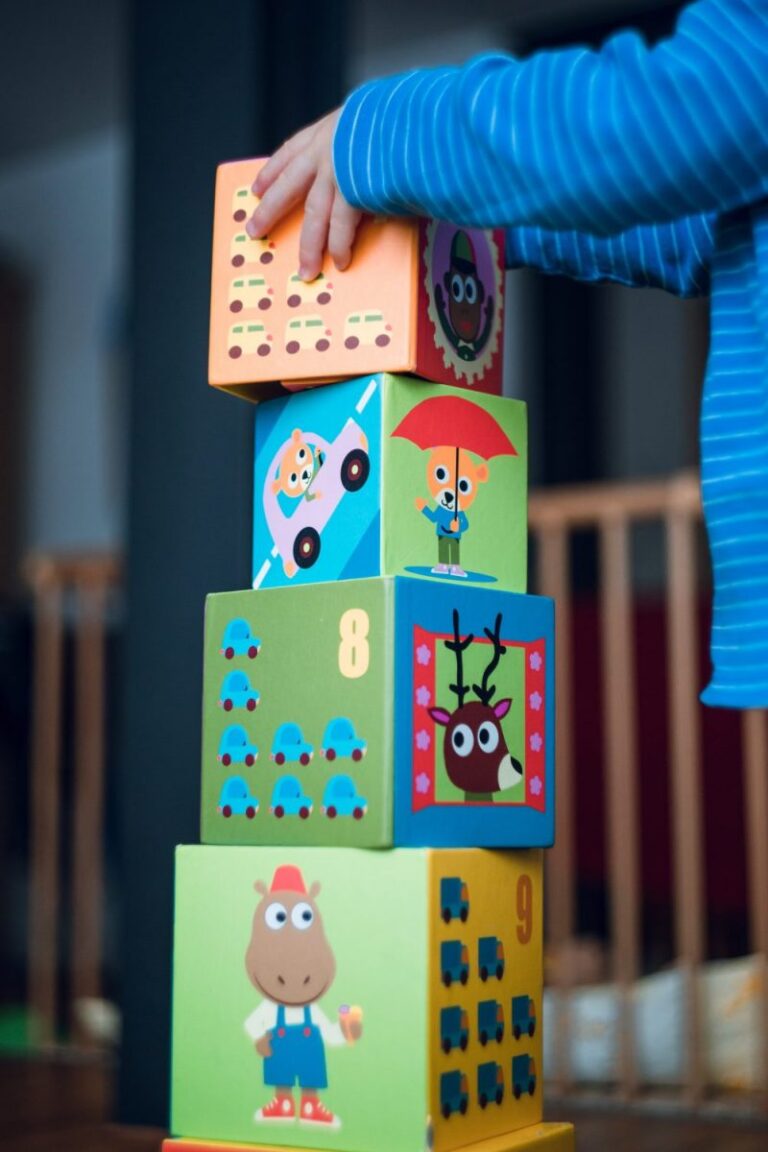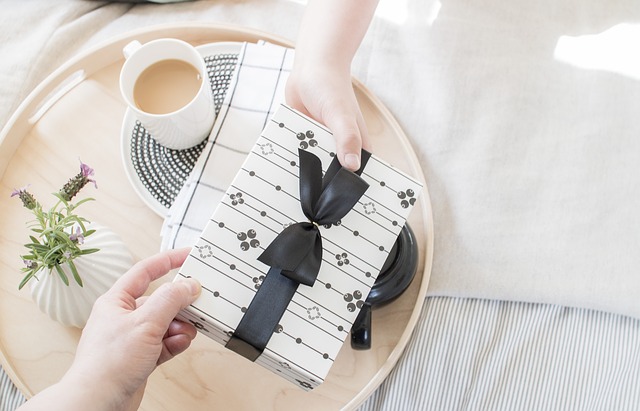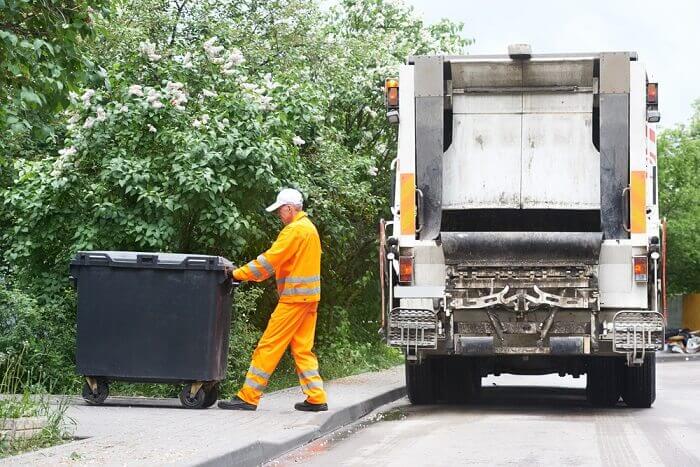American children don’t score as well on mathematics tests as their peers in many other parts of the world. Find out how to help your little ones build up their math skills.
Every four years the National Center for Education Statistics conducts the Trends in International Mathematics and Science Study (TIMSS), which compares the US fourth and eighth graders to students in other countries. In the 2003 TIMSS study, US fourth graders scored above average on the math test but were 12th overall out of 25, placing behind countries such as Japan, England, and the Russian Federation. American eighth-graders also scored above average yet placed 10th of 35 countries participating and were behind such countries as Hungary, Korea, and the Netherlands.
How can we improve these statistics and get our kids to improve their math skills? Start early! Children as young as seven months may already be developing abstract mathematical concepts—much earlier than once thought, according to a recent Duke University study by Kerry Jordan and Elizabeth Brannon published in the February 2006 Proceedings of the National Academy of Sciences.
Wondering how you can help? Take a look at the following list of concepts and activities that are sure to make learning math fun for your toddler—before he even starts school.
Size
Take a bucket of balls or other like objects of varying sizes. Have your child line the balls up across the floor. Next, ask your child to order the balls by size. Use words such as “small, smaller, smallest” or “big, bigger, biggest.” Take this opportunity to compare two items: “This ball is bigger than that one.” Or for more than two items: “This is a small ball. This ball is smaller than that ball. This is the smallest ball.”
Go on a size walk. Look for small and big objects and compare similar items: “That is a tall tree! Can you find a taller tree?”
Draw a line down the center of several sheets of paper. Label each side of the papers with opposite words such as big and small, or tall and short. Cut out two each of opposite shapes or objects (cars, animals, and so on) to fit each category. Have the child place the cutouts on the appropriate papers. You can also have the child glue the object to the appropriate paper and appropriate side.
Volume
Fill plastic shoe boxes with ingredients such as rice, dry mashed potatoes, water, and so on. Allow children to play with same-shaped sets of stacking cups by scooping and pouring the ingredients in and out of the cups. Discuss how many scoops of one size it takes to fill another. Use words such as more and less.
Using the same boxes, provide various shaped and sized containers. Consider individual-sized milk containers, drinking cups, and tubes. Allow the child to explore the material by pouring and scooping the ingredients into the containers.
Geometry
Label sheets of paper with standard shapes. Start with square, triangle, and circle. If the child is older, add rectangle, oval, diamond or rhombus, and hexagon (six equal sides).
Have cutouts of each shape in a variety of sizes. Have the child place the shapes on the correct paper. The child can also glue each shape to the correct paper.
Cut out shapes of squares, triangles, rectangles, and circles in varying sizes. Allow children to create pictures on blank paper with the shapes.
Encourage using the shapes to create both concrete objects (people, trees, cars) and abstract objects (those that do not represent any known object).
Take your child on a shape hunt. Glue one each of a triangle, square, rectangle, and circle on small note cards. Consider punching a hole in each card and placing the cards on a ring for easy access. Take the cards outside or through the house looking for common objects for each shape.
The cards serve as a reminder and reference. The adult can list on the back of each shape card what the child finds for the particular shape. Review the list once the game is stopped.
Numeration and Counting
As you did with the shape hunt, take your child on a number hunt. Adjust the number range depending on the age and knowledge of the child.
Cut paper plates in half like a puzzle. On one side of the puzzle write a number and on the other half, place objects of the same number. You can use stickers, Popsicle sticks, small pretzels, etc. Have the child match the written number with the number of objects.
Cut cardstock into smaller pieces to resemble a deck of cards. On one side of each card write a number. On the other side place stickers to match. Have the child count the stickers, then flip the card to see if the correct number was guessed.
Write numbers on the inside bottoms of paper or plastic cups. Have the child count and place objects equal to the written number into the cup. Cheerios make tasty counters.
Graphing
Make a floor graph. Use colored pieces of paper or blocks to represent one unit. Have the child place a sheet of paper on the floor for each girl in the family. Select a different colored paper to represent the number of boys in the family. Place the lines beside one another. Discuss concepts of more and less, tall and short. Or: Collect a pile of toys. Graph the different toys (dolls, cars, and blocks) within the pile.
Create or purchase a large piece of graph paper. Label with sunny, rainy, cloudy, snowy. Have the child color in one block for each day during the month that corresponds with the appropriate weather. Each label should be represented by a different color. Complete one graph for each month. Discuss concepts of most and fewest. This is an opportunity to also discuss that zero is a number. Or: Graph the different types of clothing included in one pile of laundry (socks, shirts, pants).
From Beethoven to Van Gogh, your toddler can learn a variety of cognitive and creative skills from the great masterworks. Two-year-old Junie sticks both fingers in her ears and closes her eyes. Then she makes noises with her tongue. Devon, a three-year-old boy, steps into a puddle and watches mud ooze over his white tennis shoes. Then he jumps. Mud splashes onto his clothes and face. Immature? Yes. However, as these children explore the world around them, they soak up information at an unbelievable rate. Did you know that a child’s brain has two times the neural circuits of an adult’s brain? Junie discovers new sounds with her experiment, and Devon learns how mud feels and moves. This is exploration; this is creative learning.
“No longer do we consider the first five years of life to be a vast cognitive wasteland during which [the] brain undergoes an arrested development. The neural networks by which all future complex learning will be based are forged during this crucial early period and by a specific series of vitally important brain processes.” This excerpt, taken from the article “Early Brain Development and Learning,” by Kenneth A. Wesson, Education Consultant for Neuroscience, explains that toddlers and preschoolers are capable of learning more than parents sometimes think possible.
Meet the Masters
The Masters, all those famous artists whose works deck the walls of prestigious museums, and the composers whose music graces the air in theatres around the globe, have much to share with youngsters. If we limit children to modern art depicted in cartoons and picture books, or expose them only to early childhood music with easily memorized lyrics, we withhold the greatest works (and at a crucial time, when our children’s brains are most active). The art of Monet, Van Gogh, da Vinci, and the music of Beethoven, Tchaikovsky, and Mozart are not too complex for youngsters.
“[Toddlers] are new to the planet,” says Bette Setter, founder of the mobile art education program Young Rembrandts. “They have a big responsibility in decoding everything. Art and art images help children develop in their natural quest for knowledge.”
With her students as well as with her own children, Setter notices that exposure to the arts at a young age makes children more aware of details. “They become whole thinkers,” she explains. “And they keep the art images for life.”
Sarah Herbert, early childhood teacher at The Center of Creative Arts in Missouri, explains that teaching children art and music through the works of the Masters encourages development of many skills. “When they are painting, they’re becoming more autonomous.” Herbert recognizes How can parents apply works of the Masters to early childhood education?
·Hang prints on the wall at eye level so children can study famous paintings up close. Prints can be purchased in art stores, online, or checked out from the library. You can also find magnets, coffee mugs, and calendars that feature artwork by the Masters.
·Discuss colors and shapes in the art. Can your child name the color or shape? Can he or she find another object of the same color or shape?
·Talk about the distance of items in the print. Close-up items are larger than ones far away. Look out the window to see how this same concept is true in reality.
·Identify items in the print. For instance, in Starry Night by Vincent Van Gogh, a child can identify the stars, houses, trees, darkness, and even the wind.
·Use descriptive words to discuss the prints. Help your child learn how to describe items with words.
·Link art and life through literature. For example, read Where the Wild Things Are by Maurice Sendak. Discuss the emotion on Max’s face when he is angry. Look at some of Rembrandt’s sketches. What emotions do the subjects express? Ask your child how he expresses emotion.
·For an easy-to-clean, finger-painting center, tape newspaper over a low windowsill, lay a drop cloth on the floor, and tape a piece of white paper to the window. A child can paint on the paper and the window. The natural backdrop, as seen through the window, may provide inspiration for your budding artist.
·Dance to classical music with your child. Let him explore whole-body movement in any way he chooses. Encourage him with applause and supportive words.
·Provide instruments for your child to mimic the syntax of music. Instruments can be as simple as a coffee can filled with dry beans or a wooden spoon and a pan.
Let’s Talk Art
“The way a child thinks about her art is more important than the way you think about it,” says Herbert. “Never impose limitations and never say, ‘I’m not good at this.’ It introduces fear. Never evaluate a preschooler’s music, art, or dance. Make observations from fact. Say, ‘there is a red circle,’ or ‘see these three red lines.’ Evaluating may inhibit creativity or discourage a child.”
The concept of children understanding art in their own way is not new. Charlotte Mason, a liberal-thinking educator in the late 1800s, wrote in her book Home Education, “We cannot measure the influence that one or another artist has upon the children’s sense of beauty, upon his power of seeing, as in a picture, the common sights of life; he is enriched more than we know in having really looked at a single picture.”
Parents cannot travel inside their child’s brain and ensure that all the educational efforts they make are learned, stored, and applied appropriately. They can be certain, though, that introducing art and music, which have struck emotional chords in humans worldwide for centuries, will enrich an education. The developing mind of a child will soak up whatever it is surrounded with, so why not provide the best history and culture we have to offer?




